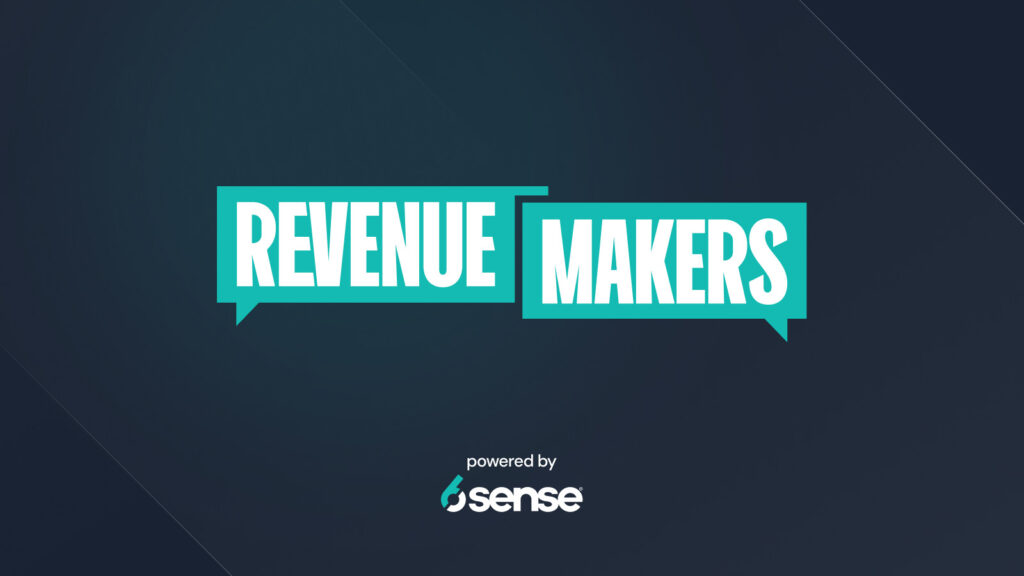Which of the following actions most indicate a customer is ready to buy?
- Scheduling a demo
- Downloading your latest white paper
- Reading customer reviews on sites like G2
- Viewing your website without doing anything else
No matter the customer or the industry you work in, the answer will always be… It depends. Each is an intent signal.
The ability to capture intent signals and tie them back to a specific account is a key advantage of intent-based marketing. In the example above, signal “D might not seem like much. But if you notice website visits from six different IP addresses all associated with the same account, that means you have an entire buying team visiting your website. That’s a BIG deal.
What Are Intent Signals?
Intent signals are the digital footprints indicating a potential buyer’s interest in purchasing products or services. They are also vital in understanding customer needs, predicting buying behavior, and enhancing engagement through targeted marketing.
Search queries. Content engagement. Website visits. Social media interactions. Online form submissions. Clicks on digital ads. New tech stack integrations. A recent company acquisition.
These can all be intent signals, reflecting how and when a potential customer is in-market, researching your solution, and considering a purchase decision.
This guide will explain how to identify, interpret, and act on intent signals to unlock the full potential of your marketing and sales strategies.
Types of Intent Signals
You can categorize intent signals in two ways: 1) known intent signals and 2) anonymized intent signals. Let us explore the difference.
Known intent signals are those directly associated with identified individuals or organizations. Examples include:
- Contacts to your sales team directly
- Requests for a product demo
- Downloads of a white paper
- Sign-ups for a webinar
Known intent signals are also referred to as first-party intent data. That is because you can collect these intent signals using your company’s internal platforms, such as your CRM (Customer Relationship Management), CMS, or analytics tools.
For example, if a lead from your CRM engages with multiple pieces of content related to a specific product, it may indicate a strong intent to purchase.
You can use known intent signals to tailor your marketing and sales efforts more effectively to meet the needs of high-intent leads and prospects.
On the other hand, anonymized intent signals are considered second- and third-party intent data. Examples of anonymized intent signals include:
- Aggregated website visitor data
- Industry-specific trends from research reports
- Engagement metrics on third-party review platforms
- Social media listening data
When de-anonymized, these intent signals can be the key to uncovering hidden opportunities, understanding market trends, and identifying potential leads.
For example, by knowing which companies are engaging with third-party reviews of your product, you can prioritize outreach efforts that educate and guide them through the evaluation stage of the buyer journey.
But how do you de-anonymize and harness the full power intent signals? By using an AI-powered intent data provider like 6sense.
Leveraging Intent Signals with 6sense
6sense’s Intent Data platform can provide comprehensive insights into buyer behavior by identifying, aggregating, and analyzing intent signals. Here is how.
Enhancing Targeting Accuracy
The number of companies in your total addressable market (TAM) may be extensive. But how many of those companies are in-market, actively searching for a new solution?
Our research shows it is only around 10% at any given time.
By analyzing intent signals, 6sense can help you identify and target those in-market opportunities more efficiently.
That means no more time wasted pursuing leads who are not ready to buy or engaging with prospects who are not interested in your solution.
Improving Personalization
Generic, one-size-fits-all, inauthentic marketing and sales messages are no longer good enough for modern buyers.
According to research by Epsilon, 80% of consumers are most likely to purchase from businesses using personalized advertising or marketing.
Insights derived from intent signals enable businesses to enhance personalization efforts by understanding the unique preferences and behaviors of individual customers.
For instance, by leveraging 6sense’s capabilities to de-anonymize intent signals related to a prospect’s online activities, you can gain insights into their specific areas of interest and the stage of their buying journey.
You could then use that information to craft highly personalized messages and offers that resonate with the prospect.
Boosting Conversion Rates
With enhanced targeting and personalization, you can increase the relevance of your marketing messages, capturing the attention of potential customers more effectively.
As a result, you can cultivate stronger connections that drive conversions. For example, a recent study showed a 760% increase in email revenue from personalized and segmented campaigns.
Intent signals identified by 6sense can help you determine the most promising prospects, tailor your messaging to their needs and interests, and engage them with timely and relevant offers.
Best Practices for Using Intent Signals
Complying with Laws and Regulations
When collecting and managing intent data, it is crucial to prioritize quality and compliance with data protection regulations.
Implement data governance processes to ensure accuracy and relevance, regularly audit data sources, and obtain explicit consent for data collection whenever necessary.
Additionally, consider investing in secure data storage and management systems to safeguard sensitive information.
Analyzing and Acting on Intent Signals
Advanced technologies such as AI marketing platforms and machine learning can effectively analyze intent signals for actionable insights.
These technologies can help you uncover patterns, trends, and correlations within reams of data, enabling predictive analysis and proactive decision-making.
It is also essential to promote collaboration between marketing and sales teams to establish transparent processes for choosing customers to target and translating insights into marketing campaigns, personalized sales outreach, and other strategic initiatives.
Measuring Success
Establishing key performance indicators (KPIs) and metrics aligned with business objectives is essential for measuring the impact of strategies based on intent signals.
We recommend replacing outdated metrics with more useful—and actionable—metrics made possible by intent data, such as in-market accounts and account velocity through buying stages.
For more of these intent-based metrics, check out Chapter 7 of our guide to intent data.
Additionally, monitor changes in customer behavior, market trends, and competitive landscape to assess the broader impact of your strategies.
Final Thoughts: The Value of Intent Signals
Spotting and understanding intent signals are the key to revolutionizing your marketing and sales strategies.
By tapping into these valuable insights, you can precisely target your audience, tailor your messaging, and drive better business results.
Ready to take your marketing to the next level? Explore 6sense’s Intent Data platform.





